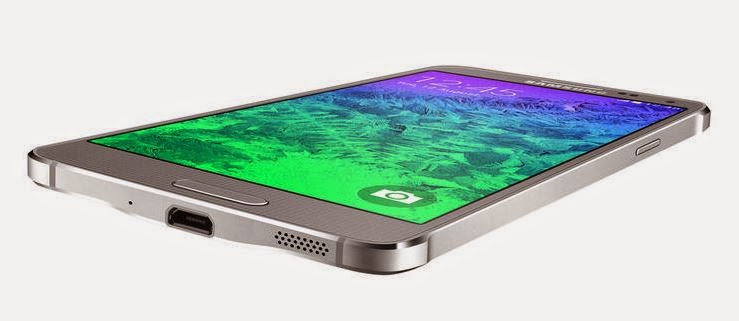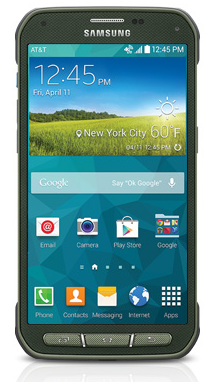Everybody knew this was coming. But Samsung managed to pull some surprises from it's bag of tricks which were, surprisingly enough, not leaked before the announcement.
Galaxy Note 4
As expected, Samsung has launched the Galaxy Note 4 at its pre-IFA 2014 event, Samsung Unpacked 2014 Episode 2. Samsung also launched a unique smartphone with a side display called the Galaxy Note Edge.
The Samsung Galaxy Note 4 comes with the new S Pen stylus with improved pressure sensitivity, as well as the new Smart Select feature, apart from the new calligraphy and signing pen writing options.
The Samsung Galaxy Note 4 runs on Android 4.4 KitKat, and features a 5.7-inch Quad-HD (1440x2560 pixel) Super AMOLED display with a pixel density of 515ppi. It weighs in at 176 grams, and is 8.5mm-thick.
The Galaxy Note 4 will be made available in 4G LTE and 4G LTE Cat.6 (LTE Advanced) variants depending on the region. The processor will be either a 2.7GHz quad-core processor, or a 1.9GHz octa-core (1.9GHz quad-core + 1.3GHz quad-Core) processor. Both feature 3GB of RAM.
The Samsung Galaxy Note 4 features a 16-megapixel autofocus rear camera with Smart OIS, and a 3.7-megapixel front-facing camera with a f/1.9 lens. It comes with 32GB of built-in storage, and expandability via microSD card. Connectivity options include Wi-Fi 802.11 a/ b/ g/ n/ ac, GPS/ Glonass, NFC, Bluetooth v 4., IR LED, USB 2.0, and MHL 3.0.
Sensors onboard the Galaxy Note 4 include an accelerometer, geo-magnetic, gyroscope, RGB, IR-LED, proximity, barometer, hall sensor, finger scanner, UV, heart rate monitor. It features a 3220mAh battery.
Samsung is also touting the Multi-Window feature available from the Recent button.
The Galaxy Note 4 will be available in Charcoal Black, Frost White, Bronze Gold, and Blossom Pink in global markets starting October.
Galaxy Note Edge
The Note family added a second new phablet today, the Samsung Galaxy Note Edge. The name isn't random, the right edge of the screen folds to cover the side of the device and enable unique interactions. So, not the three-sided screen of the rumors but two sides are unique enough.
The Galaxy Note Edge is based on the Galaxy Note 4 internally, but it's the screen that makes all the difference. The folded side adds an extra 160 pixels so the resolution grows to 1,600 x 2,560 (the highest on a pocketable device yet if you keep note on those things) but it also makes the Galaxy Note Edge a bit wider than its straight-screened sibling.
Samsung has added enough smarts to the curved side that accidental touches to it are not a problem.
With the phone locked, the curved side can display the Quick Glance info (time and notifications). When you wake the screen, the side displays notifications for various features, including timer and flashlight shortcuts and even a ruler (which works surprisingly well on the curved side).
With the phone finally unlocked, the number of options grows threefold. You can keep shortcuts on the side for easy access or use the curved side for at-a-glance info (say a Twitter feed or a stock ticker). Or you can use it to enhance multitasking by switching between several screens (think virtual desktops). Event switching between the pages of the homescreen or the app drawer is also handled by the curved side.
Individual apps can put the curved side to use too, usually to keep the main screen free from clutter. Both the camera and the video player put their controls on the side so the screen is left to the viewfinder/video. Samsung will release an API to enable third-party devs to utilize the potential of the curved side as well.
As you can imagine, the Samsung Galaxy Note Edge experience revolves mostly around the curved side of the screen. Beyond that it's a Galaxy Note 4 with Snapdragon 805 or Exynos 5433 chipset, Android 4.4, 16MP OIS camera and S Pen stylus.
The Note Edge has a slightly smaller battery (3,000mAh vs. 3,220mAh) and the USB port moves back to version 2.0.
Gear VR
Samsung announced its first-ever virtual reality headset, named Gear VR. It is a headset that Samsung has built in conjunction with Facebook owned VR company Oculus, and the company aims to invest more in this technology in coming time.
So, what does it feel like to play a game or watch a movie using the headset? Here are our first impressions of Samsung's new Gear VR virtual reality headset...
Samsung Gear VR is a pretty big gadget and consists of two parts -- the headset and the strap. The headset is big and characterized by a curvy and sloping design. You need to pop a Samsung Galaxy Note 4 in the headset in order to make Gear VR work.
On the right side of the headset is a touch-sensitive scroll pad that can be used to juggle between different functions on the screen. The volume hardware key is also located on the right. You can change the focus of the image from a scroll wheel located on the top of the screen. This feature works well even if you wear prescription glasses.
However, if the difference in the power of both your eyes is very big, then viewing the image would be a problem as you cannot change focus separately for both eyes.
The strap is pretty much what you would expect from a gaming headset: it sets Gear VR on your head such that it doesn't slip off. The plastic piece on strap that goes above the head is shaped ergonomically, such that it is flush with the shape of the head.
Despite trying to make the Gear VR as comfortable as possible for the wearer, Samsung has not been able to manage the weight of the device. The headset is pretty heavy so your head would keep drooping in front when you wear it. There is no way to add weights in order to balance the weight of the device as well.
Watching a video
Samsung demoed a video using IMAX technology on Gear VR at the launch event. You can see videos loaded on the Galaxy Note 4 on the headset, and there are a number of content companies that Samsung has partnered with for the device. You can choose content offered by Vevo, Marvel, Imangi Studios, Warner Bros etc.
When the video started playing on Gear VR, we could see the video as it would look in an IMAX theatre. Move your head to the left or right and you will see empty seats in the virtual movie hall. Look up and you will see the ceiling. It is a very different experience compared to watching a movie on a mobile device.
However, there is a problem, and a major one at that. Gear VR shows very pixilated videos, even though the Note 4's screen has a QHD resolution. The likely reason is that Gear VR's lenses focus on only a small portion of the screen to play the video and then magnify it up this portion only, thus resulting in a pixelated display.
Another problem we encountered was the sound quality. The sound is delivered by the speakers of Note 4, and the headset itself does not amplify it artificially. During our demo, this resulted in low sound while watching the movie. Of course, this was in a noisy hall where around 500 people were milling about, so your real-world experience would most likely be better.
Operating the device is pretty simple: touch the scroll pad on the side to fast forward, rewind, pause or play. Turn the volume up or down using the hardware key on the same side.
UI which is seen inside the Oculus
Playing a game
Playing games on a VR device is also very different from playing them on a console, PC or mobile device. You are a playable character in the game and can interact with other characters. Instead of panning over the screen once to see what's near you, on Gear VR (as well as other VR headsets) you move your head to see your surroundings.
You can perform actions using the touch-sensitive pad on the right side, so picking up objects, moving around etc is done using this controller.
Low audio was a problem here too, but we don't foresee any issues when you are playing a multiplayer game with friends who are also on Gear VR.
That's it guys, if you liked this article, +1 to let me know and follow me/our officiall page on Google+ to be one of the first ones to know whenever we post more awesome content like this! :D











